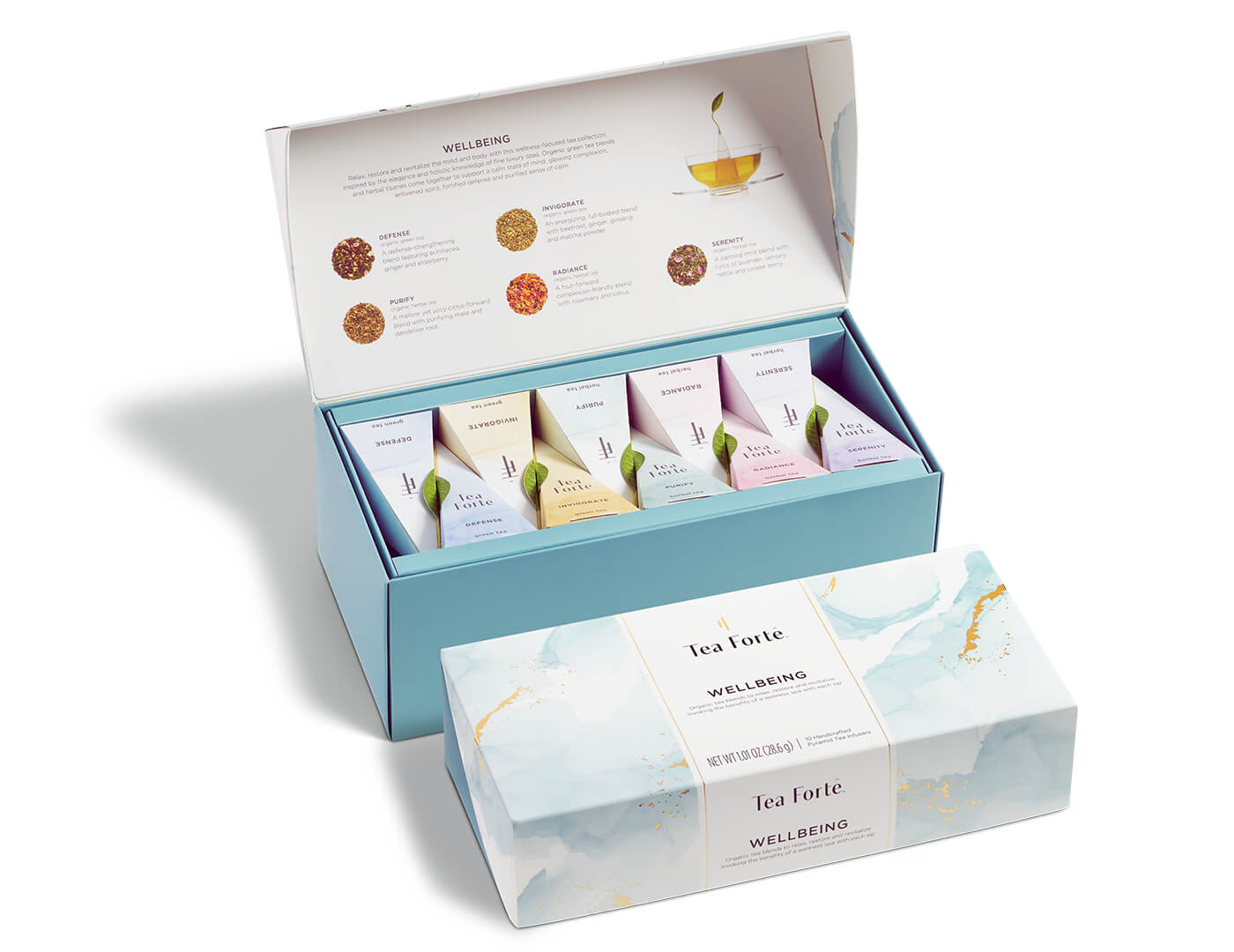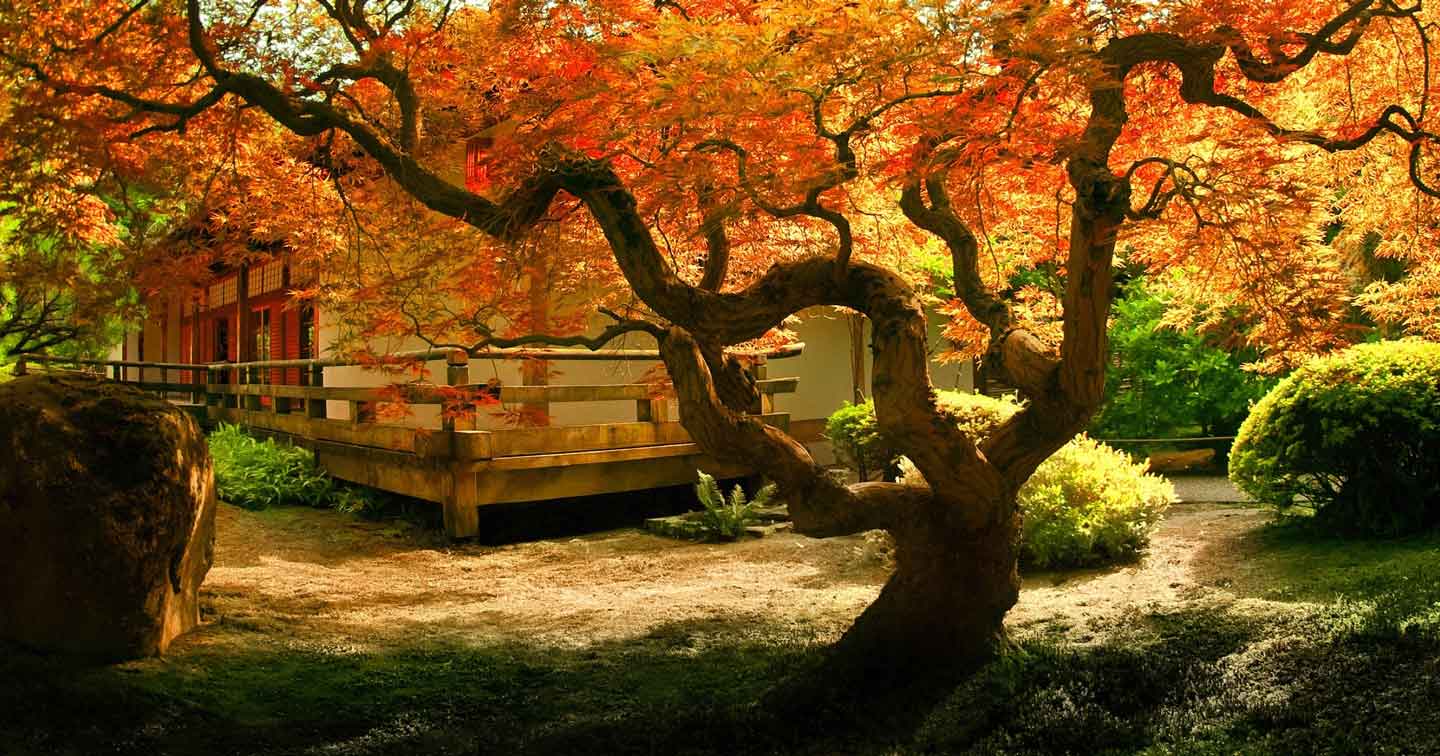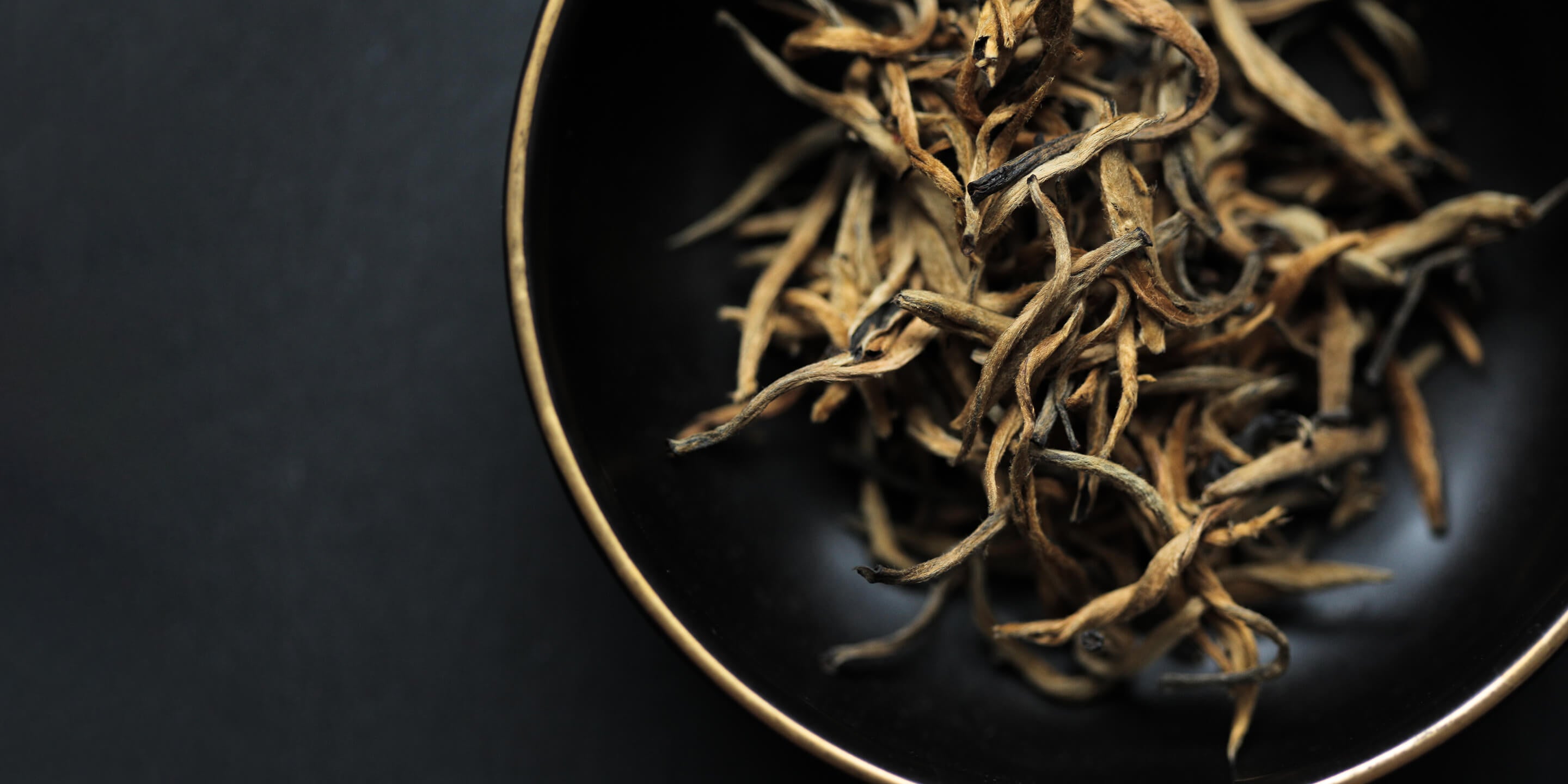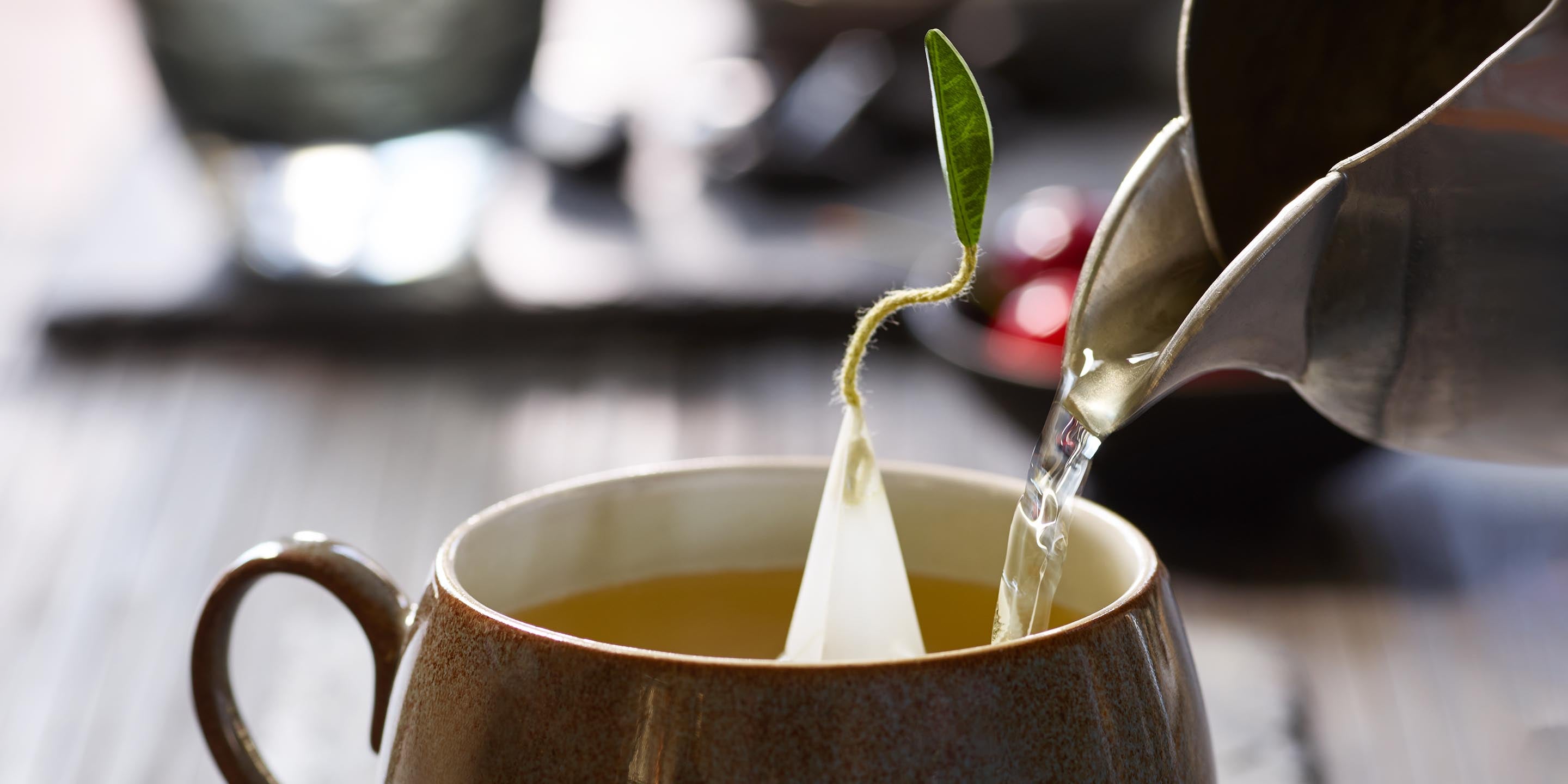Alongside water and coffee, tea is one of the three most consumed beverages in the world, delighting those who enjoy it across the globe. But while the drink is ubiquitous today, its history boils down to one accidental cup consumed nearly five millennia ago. Read on to discover the birthplace and history of tea.
Tea is made from the leaves and buds of the camellia sinensis, a flowering evergreen shrub thought to be indigenous to China. Today, all black, green, white, and oolong tea is made with this key ingredient, while herbal tisanes (casually called “herbal teas”) are made from other botanical sources, from herbs and flowers to berries and seeds. Legend has it that the leaves in the emperor’s water that fateful day blew in from the nearest camellia sinensis plant, and thus, Shen Nung became the world’s first tea drinker.
HOW TEA BECAME POPULAR
Tea is made from the leaves and buds of the camellia sinensis, a flowering evergreen shrub thought to be indigenous to China. Today, all black, green, white, and oolong tea is made with this key ingredient, while herbal tisanes (casually called “herbal teas”) are made from other botanical sources, from herbs and flowers to berries and seeds. Legend has it that the leaves in the emperor’s water that fateful day blew in from the nearest camellia sinensis plant, and thus, Shen Nung became the world’s first tea drinker.

Tang dynasty style tea ceremony
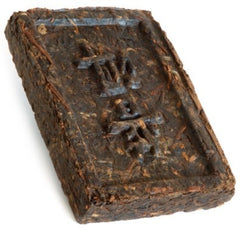
By the end of the Tang dynasty’s three-century reign in 906 AD, the act of drinking tea had become a common pastime across China, where the leaves were steamed and packed into brick-like cakes for easy transport and trading. Near the turn of the 13th century, a Japanese priest named Myoan Eisai – now considered the founder of Zen Buddhism – took a trip to China and, as the story goes, returned home with tea seeds which he soon planted in Japanese soil. Years later, he wrote his own book about tea and gave it to a samurai general as a gift, sparking local interest in the mysterious beverage.
Tea brick-like cakes for easy transport and trading
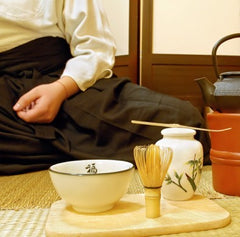
Over a great many decades to follow, samurai warriors would gather together to drink tea and discuss politics. The beverage was used for a host of medicinal purposes as well, thought to balance the body and the mind while warding off illness. Tea ceremonies were banned by the Japanese government in the 14th century over paranoia about political discussions, but they later resumed, and ritualistic matcha ceremonies are commonplace to this day.
Samurai warriors gather together to drink tea
TEA FOR TWO
Tea was largely Asia’s secret until the 17th century, when it began making its way to Europe via Dutch and Portuguese trade routes. A trading post was set up on the isle of Java in 1606 and the first transcontinental tea voyage took place between China and Europe, soon after which tea became all the rage in Holland.
Once the beverage made its way to England, it quickly became a luxury enjoyed almost exclusively by the elite class. It began with the court of Queen Catherine and Charles II: the queen, born in Portugal, loved tea and wished to drink it often, and the king cultivated a favorable relationship with the East India Company, a trade giant that operated with his full military support as it forcefully occupied lands of interest. The city of Mumbai (then known as Bombay) was given to Charles as part of Catherine’s dowry, and his decision to use its port as a trade hub played a large role in the influx of tea to Britain in the years that followed.
TEA FOR ALL
The first written record of tea in Britain can be found on a shopping list written in 1644 by a man in Leeds, requesting a bottle from his local apothecary. Its first public mention in the UK was a 1658 newspaper advertisement for a new drink from China being served at one of England’s first coffee houses. By 1664, the East India Company was shipping 100 pounds of “China Drink” leaves to London at a time. Throughout the remainder of the 17th century, men from the upper and middle classes would sip tea at coffee houses while women would drink it at home. But then, steep taxation put such a chokehold on the price of tea toward the beginning of the 18th century that its sales almost ceased completely.
With tax rates soaring wildly up to 100 percent or more, the cost of tea was doubling, and yet British thirst for the delicious drink was every bit as high. As a result, organized crime began to rise, with gangs smuggling millions of pounds of tea to the masses, stuffing the bricks with filler along the way to inflate their profits. Stateside, notable smugglers included John Hancock and Samuel Adams, and in 1765, the Sons of Liberty famously organized the Boston Tea Party, during which they chucked more than 300 chests full of tea overboard into Boston Harbor as a form of protest against taxation without representation. Finally, the British Prime Minister cut the tax rate down to 12 percent in 1784, virtually eliminating the illegal activity surrounding the coveted drink and making it affordable even for those less financially fortunate.
TEA & TEMPERANCE
As tea became the drink of the people, debates began to arise over its health benefits or lack thereof. Members of the wealthy class wondered if excessive tea consumption might bring about a sense of sluggishness among the working class, and without the benefit of today’s clinical knowledge, they were clueless about the health benefits associated with the ancient drink in all its many forms

A curious footnote in the history of tea is its role in the temperance movement of the early 19th century. Concerns about tea’s effects on the body and mind began to take a backseat to the drink’s role as a substitute for alcohol, and British philanthropists started offering it at temperance meetings, encouraging attendees to lay off the liquor and drink tea instead. Largely a movement of the working class in an attempt to gain the respect of those more powerful, the temperance movement gave birth to the term “teetotaling,” which meant abstaining from alcohol consumption. The word’s relationship to tea is tenuous at best, but many teetotalers drank tea instead of spirits for extended periods of time.
Victorian Temperance Hall, UK.
TEA TODAY
Advances in 20th and 21st century medical research have brought about a deeper understanding of tea’s benefits for the body and mind, and new findings are published on a regular basis. From the anti-inflammatory, anti-microbial and antioxidant properties of teas and tisanes to the ways this ancient drink can play a role in treating specific issues, we learn new and exciting things each day about how good tea can be for us. With regard to our immune systems, the emerging field of integrative medicine combines modern treatments with natural remedies, and as we continue to learn with each new study, a daily cup or two of tea can be just what the doctor ordered.
From traditional bowls full of matcha and classic pots of Earl Grey to bold oolong blends and delicate tisanes, the right cup of tea can nudge us into our day, send us off to sleep soundly, or even help to cure what ails us. Once an accidental beverage concocted by a breeze, it’s now a universal tonic that soothes the soul and aids the body in ways we’re just beginning to fully realize. And to think: it all began with just one cup.
Presentation Box Herbal Tea Assortment
Save 25% at checkout
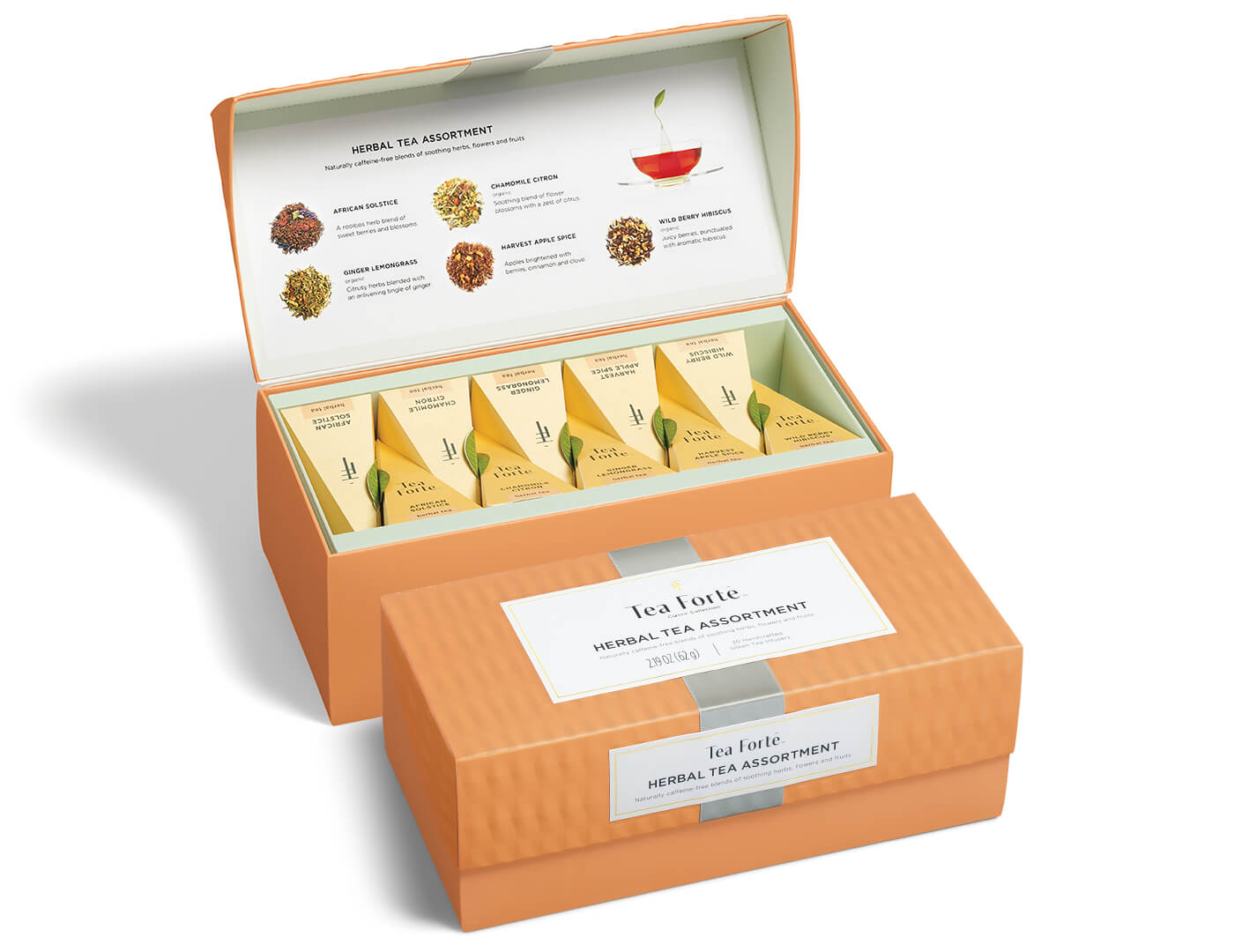
Petite Presentation Box Wellbeing
Save 25% at checkout
